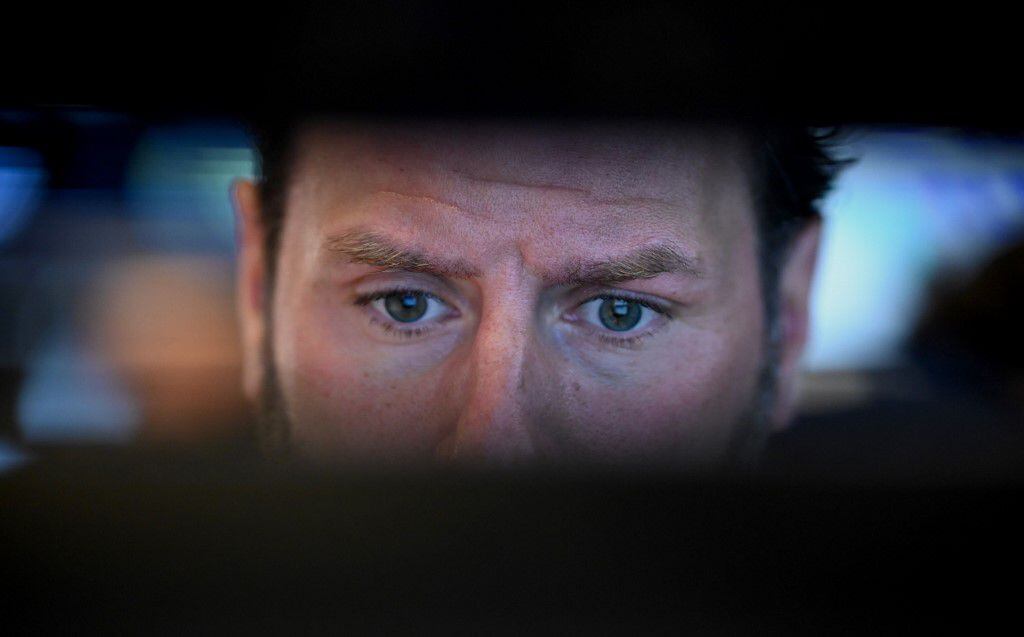
The dispute between Republicans and Democrats over the borrowing limit it could send the US economy into recession, even if the standoff doesn’t trigger a debt default, analysts say, and into a much worse crisis in which 7.5 million people could lose their jobs.
Some sectors of the vast US debt market are already feeling a sharp pinch after Treasury Secretary Janet Yellen said Monday that by early June the government could run out of money to pay its bills, whether they are payments owed to investors foreigners or nationals in Treasury bonds, to federal employees and contractors or to Social Security pensioners.
Total public spending averages about US$525 billion a month. A small part, about $225 billion on average in the first quarter, is deficit spending.
Hitting the debt ceiling would mean that the government would no longer be able to meet that budget deficit, dealing an immediate blow to millions of Americans who depend directly or indirectly on government money.
The market crash for what would be an unprecedented US default would wipe out billions more in wealth.
And while analysts have proposed a few solutions to keep the money flowing, including invoking a constitutional provision that would likely be challenged in court, none have been proven.
Investors take risk seriously. Yields on the $650 billion of Treasury securities due in the first half of June soared to all-time highs after Yellen’s announcement, reflecting the increased likelihood that they will not be paid on schedule.
The cost of insuring US public debt against default has skyrocketed to its highest level since the 2007-2009 financial crisis.
“I don’t think there are many people in the market who are betting heavily on a default. Most people I talk to think there will be a compromise between the Republicans and the White House.said Lou Brien, an analyst at DRW Trading. “But the odds are not zero, so the market is pricing in the possibility that they are too late to avoid some kind of funding problem.”.
All of this is occurring while the economic outlook is dimming anyway.
Taking breath away from the economy
Nationwide Chief Economist Kathy Bostjancic already expected a recession later this year as the Federal Reserve’s rapid rate hikes to combat inflation raise borrowing costs for households and businesses and slow bank loans. All of this takes away from the economy and could start to increase the unemployment rate, now at a record low of 3.5%.
Some of the main economic policy makers, such as the authorities of the Federal Reserve, had already predicted last December that the unemployment rate would be about a percentage point higher by the end of 2023.
A debt crisis and a default on even some of the interest payments due each day would bring it forward, Bostjancic said. To meet the payments, the government would have to cut spending where it could.
“This would immediately affect the cash flow destined for individuals and companies”, he explained. “That will have a direct impact on GDP; which reinforces the recession scenario”.
In fact, the weak 1.1% annualized growth rate of US gross domestic product (GDP) recorded in the first quarter was already considered the high point of the year.
In his opinion, the depth and duration of the effects will largely depend on the duration of defaults, which in turn will depend on the reaction of financial markets.
In the 2008 financial crisis, for example, lawmakers initially rejected the Treasury’s proposed bailout fund for banks, but record slumping stock prices and rising bond yields made them change your mind quickly. Congress approved the plan a few days later.
If even that reaction fails to get Congress to quickly lift the debt limit, a prolonged default could lead to a relatively mild recession – with 1 million to 2 million job losses and an unemployment rate of around 5 %- becomes much more painful, Mark Zandi, chief economist at Moody’s Analytics, estimated in a March report.
In the worst-case scenario, a protracted crisis, with the government forced to cut spending for a long period and consumer and business confidence crushed by the political deadlock and resulting financial chaos, unemployment would soar above the 8% -a loss of between 7.5 and 8 million jobs- and it would take time to recover.
With America’s credit situation likely permanently deteriorating, “the economy’s long-term growth prospects are also weakeningZandi wrote.
Between these two scenarios, Zandi said the next toughest economic outcome would be for the House Republican plan to prevail, which calls for drastic spending cuts. The recession would take longer to arrive – probably until 2024 – but in that case unemployment would reach peaks close to 6% and recover even more slowly than in a long gap.
Source: Reuters
Source: Gestion
Ricardo is a renowned author and journalist, known for his exceptional writing on top-news stories. He currently works as a writer at the 247 News Agency, where he is known for his ability to deliver breaking news and insightful analysis on the most pressing issues of the day.












